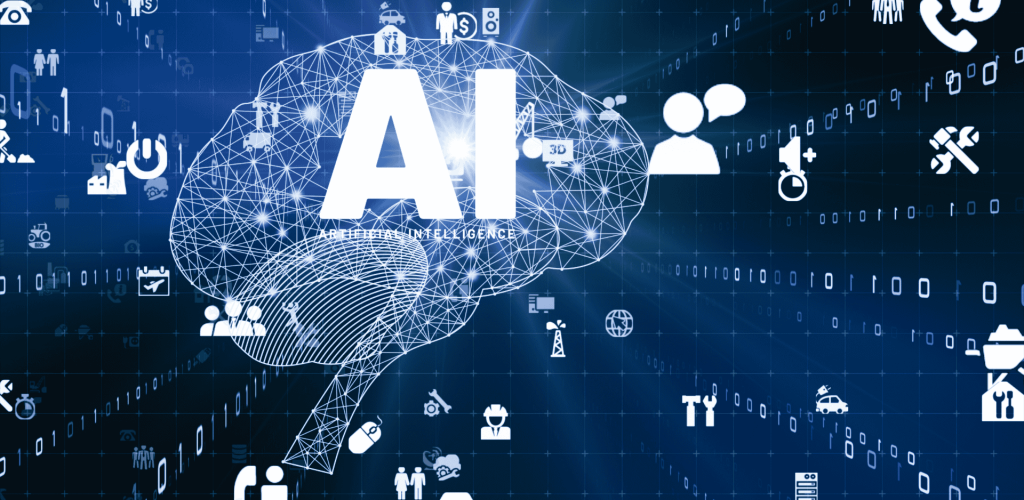

What is Artificial Intelligence? A Beginner’s Guide
Artificial Intelligence, or AI, is one of the most exciting and powerful technologies shaping our world today. But what exactly is AI, and why is it so important? If you’re new to the topic, don’t worry — this beginner’s guide will help you understand AI in a simple and easy-to-follow way.

Will AI Replace Jobs—or Help Us Work Smarter?
Artificial intelligence (AI) is no longer just a buzzword—it’s changing how we work every day. From automating repetitive tasks to boosting productivity, AI is reshaping industries. The big question everyone is asking: Will AI replace my job, or will it become my coworker?
The answer is both. Some roles will shrink, but many new ones are emerging. The future of work won’t just be about competing with AI, but working with it.

What Is a Brain–Computer Interface (BCI)?
A Brain–Computer Interface (BCI) is a system that creates a direct communication pathway between the human brain and an external device, such as a computer or robotic arm. Instead of relying on a keyboard, mouse, or voice commands, BCIs use brain signals to control technology—making human–AI interaction faster and more natural.

What is Emotional Intelligence in Robots?
In humans, emotional intelligence (EQ) is the ability to recognize, understand, and respond to emotions in ourselves and others. For robots, EQ translates into:
Emotion Detection: Identifying facial expressions, tone of voice, body language.
Emotion Understanding: Analyzing context and emotional cues to interpret feelings.
Emotion Response: Reacting in a way that feels natural and empathetic.
This process is powered by AI models, computer vision, natural language processing (NLP), and affective computing — the field of AI dedicated to understanding human emotions.

What is Generative AI?
Generative AI refers to AI models that can generate new content — such as text, images, audio, video, and even code — based on patterns learned from training data. Unlike traditional AI models that classify or predict based on input, generative models create new data that resembles the input data.
These models are powered by techniques like:
Generative Adversarial Networks (GANs)
Variational Autoencoders (VAEs)
Transformer-based models like GPT (Generative Pre-trained Transformer)

What is Quantum AI?
Quantum AI refers to the integration of quantum computing principles with artificial intelligence algorithms. Quantum computers leverage phenomena like superposition and entanglement to process information in fundamentally different ways from traditional computers.
This means they can analyze vast data sets, solve optimization problems, and perform calculations exponentially faster than classical machines. When combined with AI techniques like machine learning, quantum computing can:
Speed up training times for complex models
Improve optimization tasks in areas like logistics, finance, and drug discovery
Solve problems that are currently computationally intractable

How AI is Changing Our Everyday Lives
Artificial Intelligence (AI) is no longer something we only see in science fiction movies — it’s a real, growing part of our daily lives. From the moment we wake up to the time we go to sleep, AI technology is silently working behind the scenes to make our lives easier, faster, and more personalized.
Let’s dive into how AI is transforming everyday activities you might not even realize!

What is Agentic AI?
Traditional AI models, like chatbots or virtual assistants, work on a single-turn interaction: you ask, they answer. Agentic AI systems go far beyond this.
An Agentic AI is an autonomous system that:
✅ Sets goals
✅ Plans multi-step tasks
✅ Makes decisions
✅ Uses tools or external data sources
✅ Learns and adapts over time
Think of it as an intelligent assistant that can think, act, and coordinate actions—almost like having a digital colleague who can handle projects independently.

Difference Between AI, Machine Learning, and Deep Learning
CArtificial Intelligence (AI), Machine Learning (ML), and Deep Learning (DL) are terms you’ve probably heard often — and maybe even used interchangeably. While they’re closely related, they aren’t the same.

Common Myths About AI (and the Truth Behind Them)
Artificial Intelligence (AI) is one of the most talked-about technologies of our time — and also one of the most misunderstood.
From killer robots to job-stealing machines, AI myths are everywhere. But how much of what you’ve heard is actually true?
In this blog, we’ll bust the most common myths about AI and reveal the facts you really need to know.

How Does ChatGPT Work? Understanding AI Chatbots
AI chatbots like ChatGPT have taken the world by storm. From helping students with homework to assisting businesses with customer support, ChatGPT is everywhere. But how does it actually work?
In this blog, we’ll explain the technology behind ChatGPT in simple terms — no tech degree required!

Can AI Think Like Humans? Exploring AI’s Limitations
AI chatbots like ChatGPT can write poetry, answer questions, and hold fluent conversations — but does that mean they think like humans?
In short: no.
In this post, we’ll explore what “thinking” really means, how AI operates, and where it falls short compared to the human brain.

5 Everyday Apps That Use AI Without You Noticing
Think AI is only for scientists, techies, or robots? Think again.
Artificial Intelligence (AI) is already a part of your daily routine — often without you even realizing it. From your morning scroll through social media to asking directions or watching Netflix, AI is quietly working behind the scenes to make things smarter, faster, and more personalized.
Let’s explore five everyday apps you probably use that rely on AI technology.

How AI Learns: Simple Explanation of Machine Learning
We’ve all seen AI in action — whether it’s ChatGPT answering questions, Netflix recommending shows, or your phone unlocking with face ID. But how does AI actually learn?
In this blog, we’ll explain how machine learning — the technology behind AI — works in plain English, using simple examples you already know.

Is AI Dangerous? Breaking Down the Risks and Benefits
From voice assistants to self-driving cars, AI is becoming a major part of our lives. But as the technology advances, many people are asking:
Is AI dangerous? Can it be trusted?
In this post, we’ll explore both sides of the story — the amazing benefits AI brings, and the real risks we need to be aware of.

The Future of AI: What Can We Expect in the Next 5 Years?
Artificial Intelligence is advancing at lightning speed. What once felt like science fiction — machines writing stories, diagnosing illnesses, or driving cars — is becoming a reality.
But what’s next?
In this blog, we look at the top trends, innovations, and concerns shaping the future of AI between now and 2030.

Artificial General Intelligence (AGI): The Future of Human-Level AI Explained
Artificial General Intelligence (AGI) is one of the most ambitious goals in the field of artificial intelligence. Unlike today’s AI systems, which excel at narrow tasks, AGI aspires to think, reason, and learn across any domain like a human. But what exactly is AGI, and why is it so significant for our future?
In this blog, we’ll explore what AGI is, how it differs from regular AI, the potential benefits and risks, and the latest updates from the world of AGI research.
